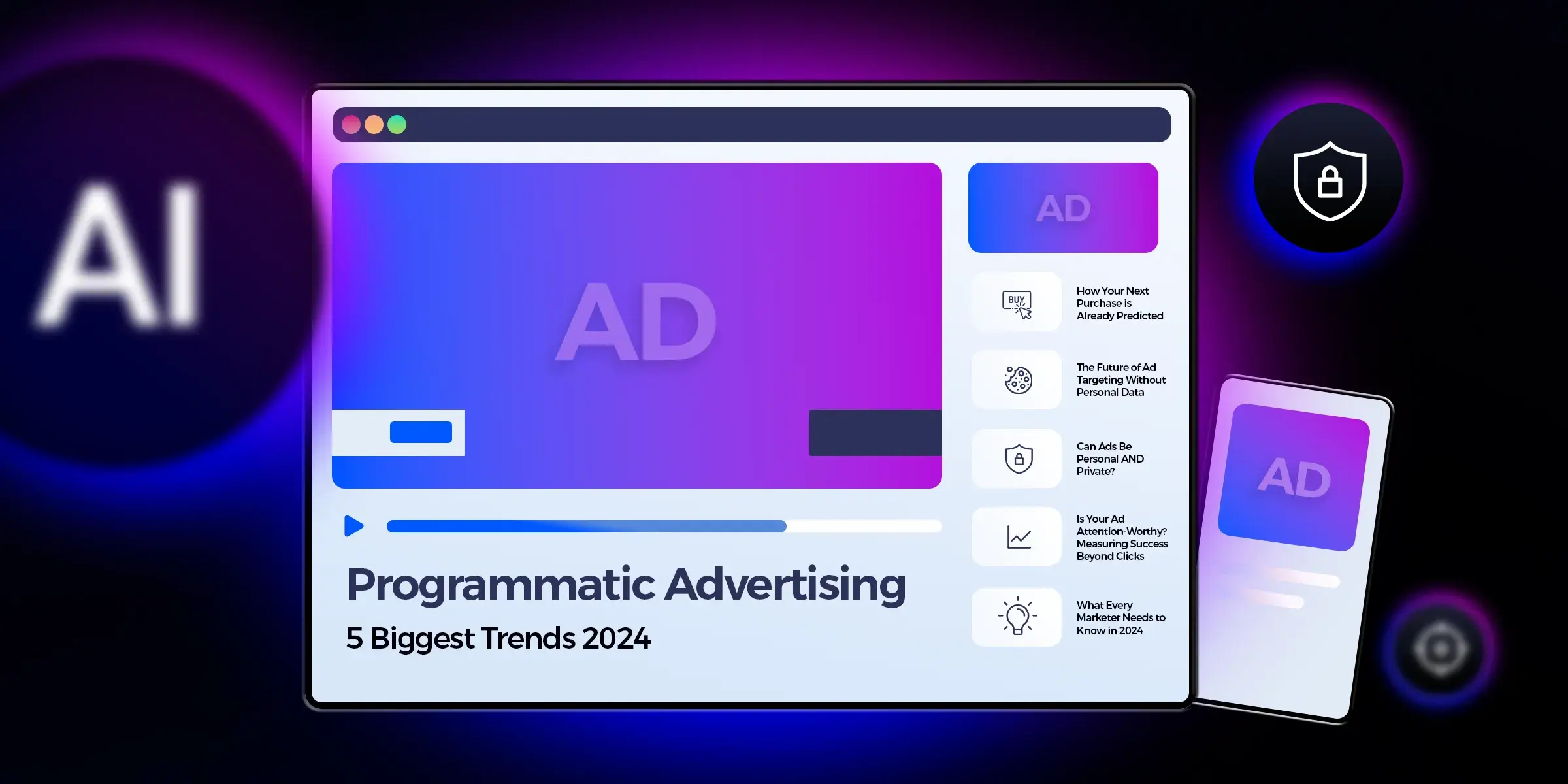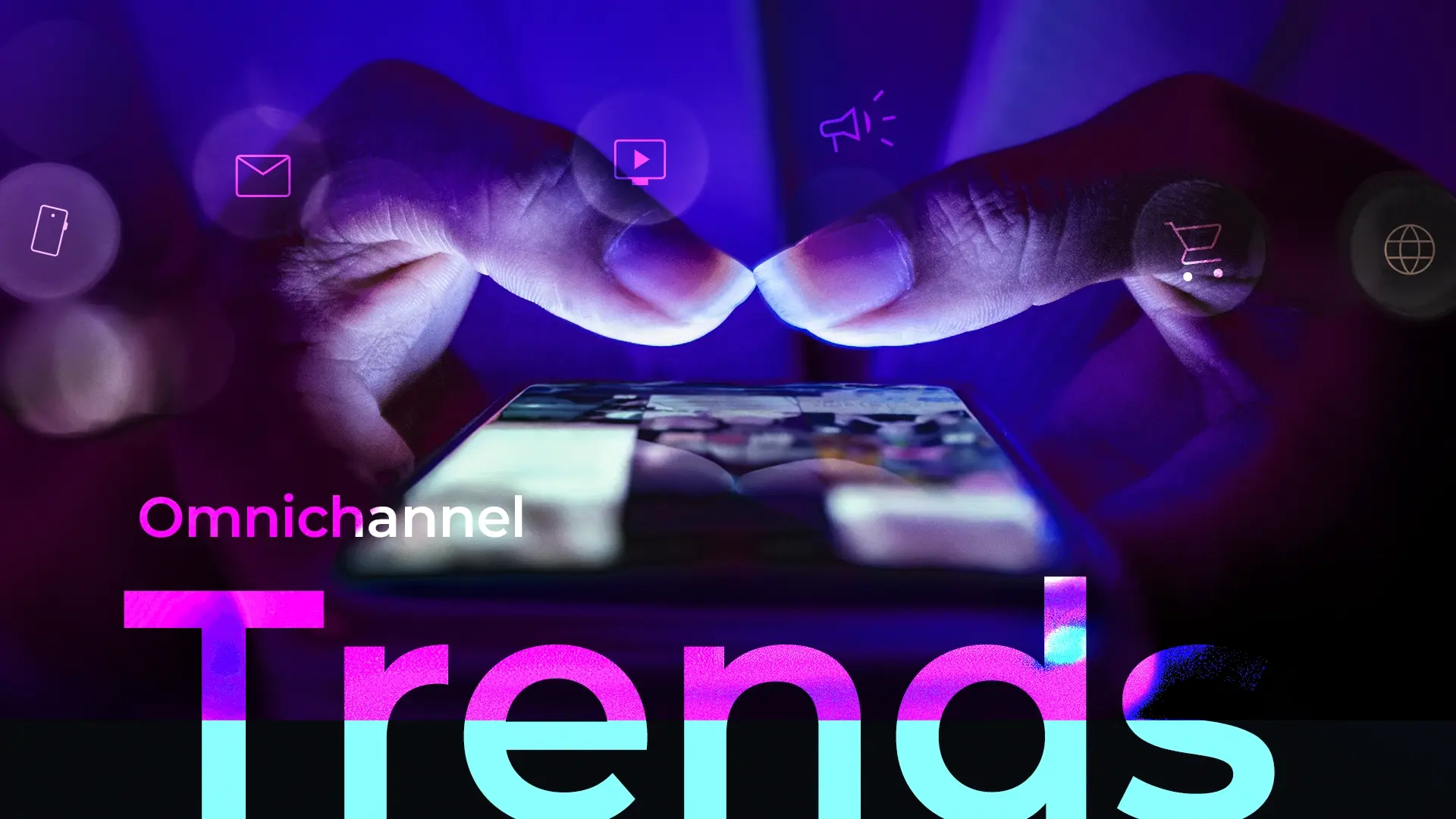Are your customers digital natives?
With around a third of the world population currently comprised of Gen Zers, odds are your audience is well adapted to using all sorts of digital channels. And that means they’re active everywhere: from browsing on their cell phone to actively participating in social media, discovering trends and making both snap and long-term decisions with the help of the internet. With your audience so internet-present and tech-savvy, an omnichannel marketing campaign is not just important: it’s necessary. But is your team following the omnichannel trends and keeping up with the competition?
The omnichannel trends you need to keep an eye on
The rise of AI tools, the deprecation of third-party cookies, and tighter enforcement of GDPR regulations are all things your team has already heard of. All of these impact your omnichannel marketing campaigns. In this article, you’re going to find out what omnichannel marketing trends are already gaining momentum in 2025 and how they can help your team create a stronger, more impactful omnichannel marketing campaign.
1. Unified Customer Profiles Powered by AI and CDPs
When it comes to omnichannel marketing, creating seamless experiences is imperative. Because of that, data is a brand’s top priority - and your team already knows it. However, most companies face difficulties when it comes to keeping unified data. Marketing, sales, customer support, and customer success all use and keep customer data. But does your company have a system to keep it all in one place and accessible?
Customer Data Platform usage is on the rise - and this is one of the most important omnichannel trends to look into and possibly adopt. So, what is a Customer Data Platform?
Simply put, Customer Data Platforms are used to gather customer data from all possible sources inside your company - whether from marketing operations, sales efforts, or any other possible source. This way, your marketing team is able to access all data, leaving no knowledge gaps for their omnichannel marketing efforts. Customer Data Platforms essentially provide your marketing team with a 360° customer view. This means your team can create better, seamless experiences for your audience, which is imperative when it comes to omnichannel marketing strategies.
Wondering where AI comes into play? In the past year, many platforms have integrated AI tools that can further help create unified customer profiles. AI tools can leverage data to continuously update customer profiles in real time, creating dynamic customer profiles and helping your team keep up with changes in customer behavior as fast as possible. Some platforms also leverage AI tools to offer predictive analytics to help brands stay ahead of the curve. And these are only some of the advantages AI-powered platforms can offer you when it comes to omnichannel marketing.
With all this in mind, it’s easy to see that CDPs and AI-powered tools are a top omnichannel trend to watch. If you’re not already using a Customer Data Platform, it’s time to look into incorporating one into your workflow. Leveraging AI for your omnichannel marketing strategies is also a must - not just for 2025, but for the upcoming years, too.
2. Expansion into Omnichannel “Edge” Channels
When you think about omnichannel marketing, which channels do you usually think to include? Sure, there are the standard ones that all brands use. But what if you could stretch your omnichannel marketing campaigns to include more touchpoints?
Your brand needs to stay ahead of competitors. And an aspect that can definitely help regarding that is for your brand to be present on touchpoints your competitors aren’t using. That’s where this omnichannel trend is rooted: in using omnichannel edge channels to create more touchpoints in your brand’s communication with your audience. Let’s see what that means.
When marketers talk about omnichannel edge channels, they mean a combination of peripheral customer touchpoints (those that sit outside the core set of standard marketing channels), or ones that are more technologically advanced and are currently emerging. Things like voice assistants, retail media networks, and CTV platforms are all included in this category.
One prominent omnichannel trend is brands expanding to these emerging channels, creating a strong presence in more spots than ever before. This expansion of your omnichannel presence can help create a larger conversation with your audience and increase not only your customer base, but also brand loyalty.
3. Focusing on Modular Content
Omnichannel marketing campaigns require speed and adaptability. Given their size, this is usually not feasible. So, finding ways to reduce the workload without compromising on the quality of your creatives is a must. This is where this omnichannel trend comes in: taking advantage of modular content.
When teams use modular content, they essentially separate pieces of content into ‘blocks’ that can be reused in other parts of a campaign, whether on their own or in combination with other blocks.
Modular content usage is on the rise, and for good reason: it takes a significant part of your team’s workload away, while letting you combine information in different ways to create more effective messaging. Omnichannel marketing campaigns can not only be created but also expanded or adapted faster. Creative automation platforms usually allow for these content blocks, further empowering your team on their omnichannel marketing strategies.
4. AI-Driven Journey Orchestration
A few years back, marketers could only imagine taking advantage of tools that are fast, accurate, and give you predictions about customer journeys. Luckily, your teams can now harness the power of AI tools for journey orchestration.
This omnichannel trend is on the rise - and AI-driven journey orchestration will only keep improving. It’s not hard to understand why, either: marketing teams are able to predict the best channels for the omnichannel campaign deployment based on a brand’s audience, sequence messaging better, and optimize the campaigns a lot faster.
5. Privacy-First Personalization
Relying on third-party data is not an option anymore. And GDPR regulations are getting tighter and tighter. But personalization is still necessary for an impactful omnichannel campaign. So, how do you go about balancing omnichannel marketing needs with current marketing circumstances? Enter, privacy-first personalization.
Privacy-first personalization offers the same results, while putting customer privacy first. In this case, teams use zero-party and first-party data only. It’s also common practice for companies to only collect data that is considered necessary. Transparent communication also plays a big part in privacy-first personalization: brands communicate with their audience clearly about their data collection, allowing customers to opt out.
But why is privacy-first personalization on the rise? First and foremost, it protects your brand by adhering to GDPR guidelines - but it also safekeeps your audience’s data, establishing you strongly as a trustworthy brand. But it also prepares you for a cookieless future, while also appealing to the upcoming biggest percentage of your audience: Gen Z. Catering to your Gen Z audience should be, or soon become, a priority. And for Gen Zers, transparency and trustworthiness are top priorities when it comes to the brands they want to engage with, Privacy-first personalization gives brands the opportunity to build that much-needed trust with their customers
6. Regional Innovation in Omnichannel
While personalization has been a widespread best practice for years, it’s not where omnichannel stops. Your omnichannel marketing strategy can become much stronger when you combine personalization with a very popular omnichannel trend: high focus on regional audience behavior.
Brands are now focusing on hyperpersonalizing experiences on a geographic level. Keeping up with the audience’s demands for ultra-tailored experiences, brands go for creating specialized offerings based on customer locations, like holiday dishes/clothing, or different clothing collections based on the audiences’ countries. Many brands are now taking advantage of geotargeted push notifications to communicate their offers to their audience and publish regional social content.
Conclusion
Personalization might have been enough to push brands’ omnichannel marketing campaigns in the past. But it’s clear that, while personalization should still be at the core of your marketing strategies, it’s not enough to sustain your brand anymore. Brands are not just walking anymore - they’re running towards optimizing, leveraging AI tools, and being as fast as possible in adapting to their audience’s demands. So, keeping up with omnichannel trends is not just a good-to-have: it’s a matter of brand survival.







